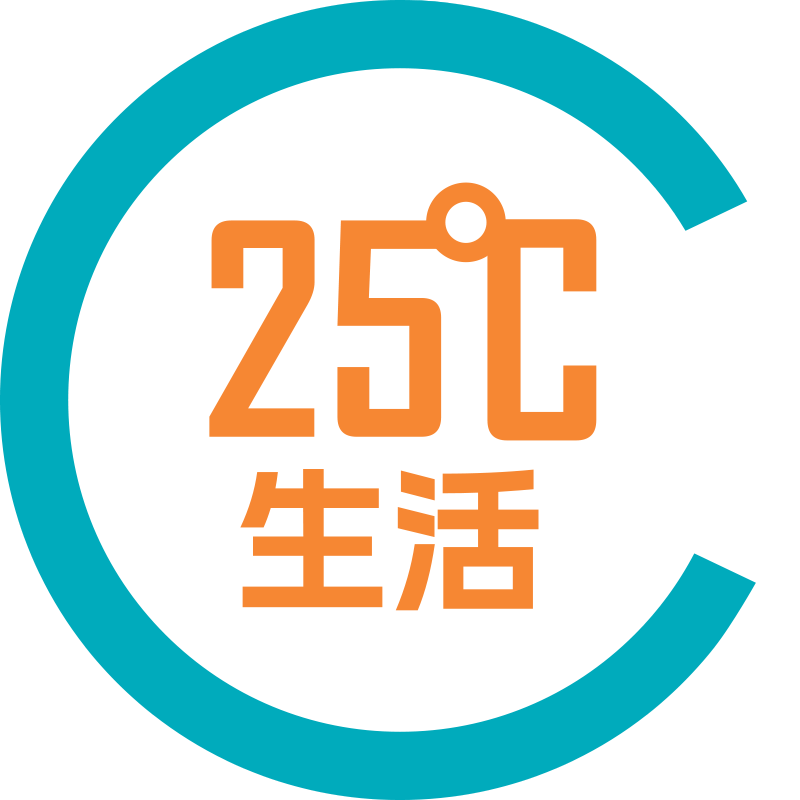- In a head-to-head diet-induced obese (DIO) mouse study, ASC47 low dose combination 1 (ASC47, 3 mg/kg, subcutaneous (SQ), once every four weeks plus semaglutide, 30 nmol/kg, SQ, once daily), demonstrated superior weight loss compared to semaglutide monotherapy (30 nmol/kg, SQ, once daily), showing an average total body weight reduction of 36.2% compared to 23.1%, a 56.7% greater reduction in body weight compared to semaglutide monotherapy.
- Human equivalent dose of ASC47 low dose 1 (3 mg/kg, SQ, once every four weeks) in mice is estimated to be approximately 20 mg based on the body surface area conversion. Interim data from a Phase I single ascending dose (SAD) study in Australia in subjects with elevated low-density lipoprotein cholesterol (LDL-C) showed that ASC47, via SQ injection, demonstrated a good tolerability profile up to 90 mg. The Australian SAD study is still ongoing with higher doses of ASC47.
- ASC47 low dose combinations with semaglutide restored the body composition of obese mice to the level of healthy non-obese mice. At the end of treatment, the percentage of total muscle mass over the total body weight of obese mice treated with ASC47 low dose combination treatments (68.8%) was similar to healthy non-obese mice (66.0%), indicating healthy weight loss. Semaglutide monotherapy was unable to restore body composition to healthy levels.
- ASC47 low dose combination treatments were well tolerated in obese mice and exhibited a statistically significant reduction in levels of liver enzymes such as alanine aminotransferase (ALT) compared to vehicle treatment in obese mice.
HONG KONG, Dec. 18, 2024 /PRNewswire/ -- Ascletis Pharma Inc. (HKEX:1672, "Ascletis") announces encouraging efficacy results from its study in diet-induced obese (DIO) mice combining ASC47, a first-in-class muscle-preserving weight loss drug candidate for the treatment of obesity, with semaglutide.
ASC47 is an adipose-targeted, once-monthly subcutaneously (SQ) injected thyroid hormone receptor beta (THRβ) selective small molecule agonist, discovered and developed in-house at Ascletis. ASC47 possesses unique and differentiated properties to enable adipose targeting, resulting in dose-dependent high drug concentrations in the adipose tissue.
Interim data from a Phase I single ascending dose (SAD) study in Australia in subjects with elevated low-density lipoprotein cholesterol (LDL-C) (NCT06427590) showed that ASC47, via SQ injection, demonstrated a half-life of 21 days. Further, ASC47 demonstrated a good tolerability profile up to 90 mg with no serious adverse events (SAEs) and no discontinuations due to adverse events (AEs). The majority of AEs were mild (grade 1). There were no gastrointestinal or cardiac AEs reported, as well as no abnormal liver enzymes reported (Link). The Australian SAD study is still ongoing with higher doses of ASC47.
In previous preclinical studies, ASC47 regular dose (45 mg/kg, SQ, once every two weeks) monotherapy demonstrated total body weight reduction of 24.6%, similar to semaglutide monotherapy (23.1%, 30 nmol/kg, SQ, once daily). ASC47 regular dose increased total muscle mass by 5.8%, compared to a decline in total muscle mass of 9.3 % for semaglutide (Link).
Detailed Preclinical Data of ASC47 Low Dose Combinations
The objective of the head-to-head ASC47 low dose combination DIO mouse study was to compare ASC47 low doses (3 mg/kg or 9 mg/kg) and low frequency (SQ, once every four weeks) combined with semaglutide (30 nmol/kg, SQ, once daily) against semaglutide monotherapy (30 nmol/kg, SQ, once daily). ASC47 low dose combination 1 (ASC47, 3 mg/kg, SQ, once every four weeks plus semaglutide, 30 nmol/kg, SQ, once daily) treatment was superior to semaglutide monotherapy (30 nmol/kg, SQ, once daily), showing an average total body weight reduction of 36.2% compared to 23.1%, achieving 56.7% more relative weight loss compared to semaglutide monotherapy (Table 1).
Table 1. ASC47 low dose combination treatments demonstrated superior weight loss to semaglutide monotherapy
Group | Dosing | Total body weight change | Total muscle | Cumulative |
Healthy non-obese | Vehicle | +8.53 % | 66.0 % | 308 |
Obese mice | Vehicle | +8.53 % | 46.6 % | 378 |
Obese mice treated | ASC47, 3 mg/kg, SQ, Q4W | +5.54 % | 48.6 % | 388 |
Obese mice treated | ASC47, 9 mg/kg, SQ, Q4W | -1.55 % | 52.1 % | 348 |
Obese mice treated | Semaglutide, SQ, QD | -23.1 % | 57.2 % | 211 |
Obese mice treated | ASC47, 3 mg/kg SQ, Q4W + semaglutide, SQ, QD | -36.2%
(p<0.0001 vs | 68.8%
(p=0.0001 vs | 251
(p=0.0385 vs |
Obese mice treated | ASC47, 9 mg/kg, SQ, Q4W + semaglutide, SQ, QD | -35.9%
(p<0.0001 vs | 68.8%
(p=0.0001 vs | 267
(p=0.001 vs |
Note: Treatment duration: 28 days; Obese mice: diet-induced obese mice; SQ: subcutaneous; QD: once daily; Q4W: once every four weeks
Human equivalent dose of ASC47 low dose 1 (3 mg/kg, SQ, once every four weeks) in mice is estimated to be approximately 20 mg based on the body surface area conversion. Interim data from a Phase I single ascending dose (SAD) study in Australia in subjects with elevated LDL-C showed that ASC47, via SQ injection, demonstrated a good tolerability profile up to 90 mg. The Australian SAD study is still ongoing with higher doses of ASC47.
ASC47 low dose combinations with semaglutide restored the body composition of obese mice to the level of healthy non-obese mice. At the end of treatment, the percentage of total muscle mass over the total body weight of obese mice treated with ASC47 low dose combination treatments (68.8%) was similar to healthy non-obese mice (66.0%), indicating healthy weight loss. Semaglutide monotherapy was unable to restore body composition to healthy levels (Table 1).
Cumulative caloric intake of obese mice with ASC47 low dose combination treatments at the end of treatment was statistically higher than that of obese mice with semaglutide monotherapy treatment (Table 1), suggesting that ASC47 has different mechanisms of action from incretin-based drugs.
ASC47 low dose combination treatments were well tolerated in obese mice and exhibited a statistically significant reduction in levels of liver enzymes such as alanine aminotransferase (ALT) compared to vehicle treatment in obese mice (Table 2).
Table 2. ASC47 low dose combination treatments demonstrated statistically significant ALT reduction compared to vehicle treatment in obese mice
Group | Dosing | ALT (U/L) |
Healthy non-obese | Vehicle | 31.5 |
Obese mice | Vehicle | 234 |
Obese mice treated | ASC47, 3 mg/kg, SQ, Q4W | 182 |
Obese mice treated | ASC47, 9 mg/kg, SQ, Q4W | 159 |
Obese mice treated | semaglutide, 30 nmol/kg, SQ, QD | 32.9
(p<0.0001 vs vehicle treated obese mice; no significant changes vs healthy non-obese mice) |
Obese mice treated | ASC47, 3 mg/kg SQ, Q4W + semaglutide, 30 nmol/kg, SQ, QD | 54.1
(p<0.0001 vs vehicle treated obese mice; no significant changes vs healthy non-obese mice and |
Obese mice treated | ASC47, 9 mg/kg, SQ, Q4W + semaglutide, 30 nmol/kg SQ, QD | 70.0
(p<0.0001 vs vehicle treated obese mice; no significant changes vs healthy non-obese mice and |
Note: Treatment duration: 28 days; Obese mice: diet-induced obese mice; SQ: subcutaneous; QD: once daily; Q4W: once every four weeks
Both ASC47 low doses statistically and significantly reduced fasting blood glucose, cholesterol and LDL-C compared to vehicle treated obese mice (Table 3).
Table 3. ASC47 low dose treatments demonstrated statistically significant decreases in fasting blood glucose, cholesterol and LDL-C compared to vehicle treated obese mice
Group | Dosing | Fasting blood glucose (mmoL/L) | Cholesterol (mmoL/L) | LDL-C (mmoL/L) |
Healthy non-obese | Vehicle | 7.5 | 3.53 | 0.50 |
Obese mice | Vehicle | 9.2 | 6.98 | 1.41 |
Obese mice treated | ASC47, 3 mg/kg, SQ, Q4W | 6.9
(p=0.0017 vs vehicle no significant changes | 4.08
(p<0.0001 vs vehicle no significant changes | 0.58
(p<0.0001 vs vehicle no significant changes |
Obese mice treated | ASC47, 9 mg/kg, SQ, Q4W | 5.7
(p<0.0001 vs vehicle no significant changes | 3.32
(p<0.0001 vs vehicle no significant changes | 0.44
(p<0.0001 vs vehicle no significant changes |
Obese mice treated | Semaglutide, SQ, QD | 6.4
(p=0.0001 vs vehicle | 3.90
(p<0.0001 vs vehicle | 0.61
(p<0.0001 vs vehicle |
Note: Treatment duration: 28 days; Obese mice: diet-induced obese mice; SQ: subcutaneous; QD: once daily; Q4W: once every four weeks
In obese mice, ASC47 low dose combination treatments reduced statistically and significantly more fasting blood glucose, cholesterol and LDL-C than semaglutide monotherapy treated obese mice (Table 4).
Table 4. ASC47 low dose combination treatments demonstrated superior fasting blood glucose, cholesterol and LDL-C reductions compared to semaglutide monotherapy
Group | Dosing | Fasting blood (mmoL/L) | Cholesterol (mmoL/L) | LDL-C (mmoL/L) |
Obese mice treated | ASC47, 3 mg/kg SQ, Q4W + semaglutide, SQ, QD | 5.3
(p=0.0024 vs | 2.65
(p=0.0003 vs | 0.35
(p=0.0045 vs |
Obese mice treated | ASC47, 9 mg/kg, SQ, Q4W + semaglutide, SQ, QD | 4.7
(p<0.0001 vs | 2.57
(p=0.0002 vs | 0.36
(p=0.0055 vs |
Obese mice treated | Semaglutide, SQ, QD | 6.4 | 3.90 | 0.61 |
Note: Treatment duration: 28 days; Obese mice: diet-induced obese mice; SQ: subcutaneous; QD: once daily; Q4W: once every four weeks
"We are excited by these data showing that adipose-targeted ASC47 low dose combination treatments achieved 56.7% more relative weight loss compared to semaglutide monotherapy. Importantly, in the preclinical study, adipose-targeted ASC47 low dose combination treatments produced healthy weight loss, increasing our confidence that ASC47-based combination therapies may clinically improve weight loss and muscle preservation compared to incretin-based drugs alone," said Jinzi Jason Wu, Ph.D., Founder, Chairman and CEO of Ascletis, " Unlike liver enzyme elevations observed with an apelin receptor (APJ) agonist, low doses of ASC47 in combination with an incretin-based drug showed statistically significant reductions in liver enzymes. We are advancing development of ASC47 as both a monotherapy at regular doses and a combination therapy at low doses for the treatment of obesity and other metabolic diseases."
Ascletis Obesity Portfolio
ASC47 is an adipose-targeted, once-monthly subcutaneously injected THRβ selective small molecule agonist. Interim data from a Phase I single ascending dose (SAD) study in Australia in subjects with elevated low-density lipoprotein cholesterol (LDL-C) (NCT06427590) have been released. ASC47 is currently in the clinical trials of patients with obesity in Australia, with topline data of Phase IIa study expected in the second quarter of 2025. In addition to ASC47, Ascletis is also developing ASC30, a GLP-1 receptor (GLP-1R) biased small molecule that can be dosed once daily orally or once monthly subcutaneously. Both ASC30 once-daily oral tablet (NCT06680440) and ASC30 once-monthly SQ injection (NCT06679959) are currently in Phase Ib clinical trials in the U.S. for the treatment of obesity, with topline data expected in the first quarter of 2025.
About Ascletis Pharma Inc.
Ascletis is an innovative R&D driven biotech listed on the Hong Kong Stock Exchange (1672.HK), covering the entire value chain from discovery and development to GMP manufacturing. Led by a management team with deep expertise and a proven track record, Ascletis has rapidly advanced its pipeline, focusing on two therapeutic areas with unmet medical needs from a global perspective: metabolic diseases and viral diseases. Ascletis has multiple clinical stage drug candidates in its R&D pipeline.
For more information, please visit www.ascletis.com.
Contact:
Peter Vozzo
ICR Healthcare
443-231-0505 (U.S.)
Peter.vozzo@icrhealthcare.com
Ascletis Pharma Inc. PR and IR teams
+86-181-0650-9129 (China)
pr@ascletis.com
ir@ascletis.com
source: Ascletis Pharma Inc.
【你點睇?】恒指在2024年先跌後升,你點睇2025年港股走勢?► 立即投票































